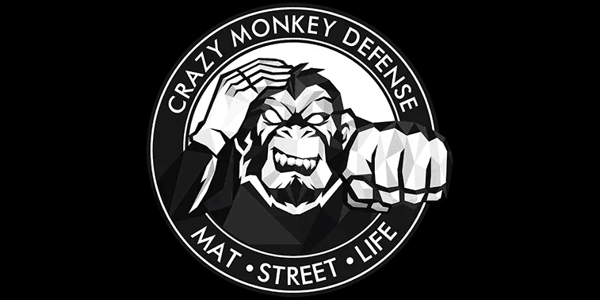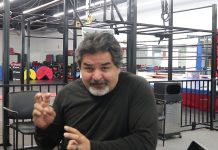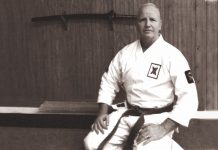A portion of your current and prospective student base would like to improve life or their sense of well-being. They are open to advice about how to make things better in their work, relationships, finances, and health.
The martial arts are always evolving. Every day new practitioners are joining the ranks. Industry research shows that martial arts participation has been increasing for the past twenty years, with more than 6 million practitioners in the U.S. alone. We seem to be doing fine, but perhaps we could plan to do even better…for our students.
People call and walk through the doors of our schools everyday interested in what we might have to offer them. A typical school’s response might be to recite a description of programs and class schedules and invite them to attend an introductory class. If the prospective student decides to give it a try, they are folded into a beginner’s class where they may do a group warm-up, learn a technique or two, and participate in some drills. And – perhaps surprisingly – some of them even come back.
We have grown our martial arts industry and increasingly reached out to share its benefits with more and more people. Is it possible, though, that in the process of growing a business that we have forgotten to focus on what our students really need and neglected to coach them toward their goals? Might those factors be the key to sustaining and expanding martial arts’ success into the next century?
What Students Want and Need
With the meteoric rise of mixed martial arts, there is clearly a market niche for people who want to learn to fight. But that is not the reason that most people seek out martial arts training.
Like motives for participating in traditional sports, research shows that people typically take up the martial arts looking for health benefits, social benefits, and skill development. Martial arts participants, however, – more than in other sports – tend to rate character development, increasing perseverance, and integrating mental and physical health as important reasons for their participation.
Combining physical and mental skill development to enhance both tactical and personal effectiveness is a cornerstone of many traditional martial art philosophies. It is lost, however, in some of the tough-guy, real fighting schools and “systems” that have become increasingly popular.
Integrating tactical training and character development, however, is neither new, nor paradoxical. One modern example is Duane Deiter’s Close Quarters Defense (CQD) system, which is the backbone of the up-close battle protocol of the U.S. Navy SEALS. One of CQD’s core principles is developing “The Complete Warrior” who is as well-equipped for success in life as in battle.
When prospective students come to you saying they want to learn to fight or to defend themselves, what they often are seeking is the confidence and inner security that comes from knowing they can do it. The late Ed Parker, founder of American Kenpo, has been quoted as saying: “It is not danger that causes us to be afraid, it is the fear of danger.” Self-defense students often want to know that they can perform under pressure and that they will respond to peril with courage and sound judgment. Teaching only tactics – even good ones – without this understanding will not satisfy the student’s training goals. And it may not adequately equip him to survive a high-risk encounter either. Under conditions of extreme stress, mental errors are at least as common and at least as problematic as technical errors.
Connecting with Students
Research shows that an instructor’s “style” and the fit between the student’s training motives and the instructional program are among the key determinants for continued engagement in martial arts. This seems to suggest that if we want to keep students – not just “get” students – it is worth spending some time figuring out what they need, what we can offer, and how those fit together. This is most effectively accomplished in the context of a relationship, not just a monetary exchange for services.
In ancient Chinese culture, the relationship between a martial arts teacher and student was clearly hierarchical. It is often described as one between a master and disciple, and akin to a parent-child relationship. The relationship was built on mutual trust. The teacher had to steer his instruction according to the student’s best interest. The student had to respect the teacher’s wisdom, have faith that the teacher would always act in the student’s interest, and be open to the teacher’s guidance and counsel.
In current times, the coaching relationship seems to be a useful platform for martial arts instruction. While martial arts participation has plodded forward over the years, the “life coaching” industry has exploded with the second highest growth rate in the U.S. Coaches have recognized that people are looking to better themselves in a variety of ways, not just to fix problems. They have noted that American consumers spend more than ZAR 500.00 [US $74.70] million each year on self-help books alone. The mentoring/consulting relationship is the foundation of successful life coaching. It may also be the cornerstone of successful martial arts instruction as well.
In their book, Martial Arts Mind & Body (Human Kinetics Press, 2000), Claudio Iedwab and Roxanne Standefer describe martial arts as “the original mind and body experience,” noting historically that striking and defense techniques in the martial arts were just a method or vehicle for learning to integrate mind and body. In essence, the martial arts evolved as a path to personal development, not principally as a technique-driven means to teach people to fight. Teaching self-defense is a worthy pursuit, but martial arts instructors may have even more to offer to certain students.
A portion of your current and prospective student base would like to improve their “quality of life” or their overall sense of well-being. They are open to advice about how to make things better in their work, relationships, finances, and health. Some are struggling with their weight, aging, work stress, overwhelming demands, lack of energy, depression, anxiety, and bad lifestyle habits. There are skills and lessons within the martial arts to address each of these. The dual challenge for the instructor is that (1) students may not be able to apply these lessons on their own, and (2) how and to what they are applied is a highly individualized process. Serving those student needs does not fit well with a big-school, large-group model of teaching.
Alternative or supplemental models of martial arts training, with an integral emphasis on life skills, will be necessary to sustain and expand the industry into the future. Rodney King’s CMD Program has recently created the Martial Arts-Life Program (MA-Life) Coaching Program to train coaches to span the gap between martial arts teacher and life-skills consultant. The objective is to develop MA-Life coaches who can competently assess student needs, co-create an individualized set of success goals and a plan for their achievement, and support, encourage and collaborate with them along that journey.
The four foundations of the MA-Life program are as follows:
1. Functional, Holistic Approach:
As Iedwab and Standefer point out, the original focus of marital arts was on integrating mind, body, and spirit. This integration may also be a foundation for well-being. Psychologically, our thoughts, emotions, and behaviors all affect each other. It is often impossible to distinguish cause from effect. Our negative or self-critical thoughts may cause us to feel anxious, or anxiety may affect the way we move and feel about our bodies. It may not be necessary to fix everything at once, but coaches should be aware of these multiple, interacting influences and should use that knowledge in their assessment and coaching.
The MA-Life Coaching process is grounded in functionality and relies heaving on movement-based learning. Although the focus of the program is on improving well-being, not on fighting or competing, students do learn how to defend themselves and develop the inner confidence, grounding and mindfulness that real martial art practice has to offer. MA-Life uses learning through physical experience and creativity toward a positive integration of mind, body and spirit.
2. Redefining the roles and relationships:
A mentor/coaching relationship between instructor and student is the cornerstone of effective life-skill development. This relationship is different in some ways from the traditional instructor-student model. A coach may deliver information, but she may also just facilitate a client’s discovery of new learning. Coaching strategies may be direct or indirect, but always working within the context of the client’s goals and toward an enhanced sense of well being.
Because much of the work in an MA-Life Coaching occurs on a one-on-one basis, the relationship is critical. Coaches must maintain a high level of emotional/social intelligence in all interactions as they are modeling life skills for clients as well as imparting information. The relationship itself, however, is dynamic and – with evolving client needs – will change over time. The quality of the Client-Coach relationship is one of the most important drivers of success.
The coaching model can be time intensive. Over time, we may see martial arts schools changing to purposefully engage in more intensive work, with fewer clients. This notion is contrary to the mega-school aspirations that are so often encouraged, but it is a viable business strategy and a socially responsible investment of human capital.
3. Focus on well-being
In the MA-Life Coaching program – as in the founding martial arts – defense and fighting techniques are used as a way to promote well-being. Well-being is viewed as state of being happy, healthy, or prosperous. It is mostly subjective – based on how you feel and how you assess your current situation. It seeks to develop confidence, not to cultivate fear.
Being functional and holistic are the guiding principles of the approach, but the goal is to enhance well-being by helping clients achieve their goals. These goals may focus on fitness to improve physical health, on emotional adjustment learning to regulate intensity and negative reactions, on communication to modify the messages we send to others through our movement, words, and behavior, or on self-concept by increasing confidence and reducing fear or anxiety. The point is that needs and goals are highly individualized. The coach and client together must carefully and collaboratively assess strengths and needs before developing an individually-tailored training plan.
4. Overcoming obstacles and Challenges
Life poses a steady stream of challenges. In the MA-Life Coaching program martial arts are used as vehicle to help clients learn to face these challenges more effectively and to achieve to their potential. Using marital arts-based movement and training, clients can learn to improve their focus and self-discipline. Through mistakes and failure, they can learn to deal with setbacks.
Clients can be coached on how to use positive self-talk and mental imagery to improve their mood, their general outlook, and their performance. Ultimately, clients build not only “self-esteem,” but more importantly self efficacy. Self-efficacy is a confident sense of mastery over a task. It cultivates a faith in oneself and one’s own abilities that allows them to move boldly forward in pursuit of their life goals and dreams.
It is said of a good leader that when the work is done, the aim fulfilled, the people will say, “We did this ourselves..” Lao Tzu
The mission of the MA-Life Coaching program is to educate, empower and inspire clients – through a functional, holistic martial arts training program – to confidently pursue and persist on a clearly defined path toward well-being. This can only be accomplished by mentoring a cadre of martial arts instructors who share this vision of transformational coaching to lead martial arts into the future.
~ By Dr. Randy Borum* & Rodney King RSME
For more information go to: www.martialartslife.info Or www.crazymonkeydefense.com
Bios of the Authors:
For over a decade and a half Rodney King has coached world champion athletes to become the best they can be in the ring. He has consulted with Special Force Military Units on helping them define and implement a winning performance mental game for the battlefield. He has acted as a Performance Coach for countless CEOs, business leaders and inspiring entrepreneurs to find their center of power, manage their fears, anger and frustration and help them develop into Embodied-Warriors for the boardroom. As a Somatic Movement Educator and Martial Arts-Life Coach, Rodney offers a unique program of warriorship tools, grounded in training the body through martial arts to refocus the mind.
He lives in South Africa with his wife and two sons.
Rodney King Websites:
Coach Rodney King
Crazy Monkey Defense
Email: Rodney@crazymonkeydefense.com
*Dr. Randy Borum is the official Performance Psychology Advisor to the CMD Program and a Professor at University of South Florida.










